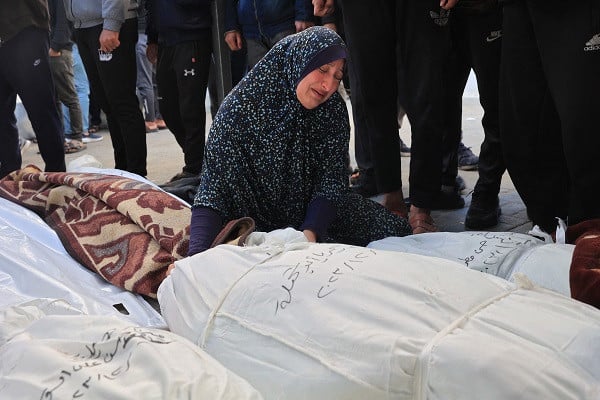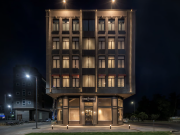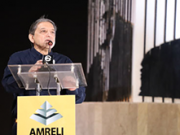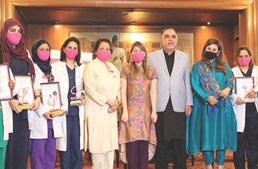GAZA: Invoking Article 99 of the UN Charter, UN Secretary-General António Guterres has alerted the Security Council to the worsening circumstances in the beleaguered Palestinian enclave of Gaza.

“The Secretary-General may bring to the attention of the Security Council any matter which in his opinion may threaten the maintenance of international peace and security,” according to Article 99 of the charter.
It will no longer be necessary for Guterres to get an invitation from a member state in order to speak at the Security Council.
In a letter to the Security Council that was made public the previous day, Guterres stated that he had to invoke Article 99 for the first time since assuming the top position at the UN in 2017 due to the UNSC’s persistent inaction and the rapidly worsening circumstances in Gaza.
Guterres issued a dire warning, saying that “nowhere was safe in Gaza” and that public order in the region might soon collapse due to the total breakdown of the humanitarian system and lack of adequate protection for people.
The letter said, “The situation is fast deteriorating into a catastrophe with potentially irreversible implications for peace and security in the region as well as for Palestinians as a whole.”
Eli Cohen, the foreign minister of Israel, attacked Guterres, calling his leadership “a danger to world peace” when he used an unusual UN procedure in relation to the Gaza war.
“His request to activate Article 99 and the call for a ceasefire in Gaza constitutes support of the Hamas terrorist organisation,” Cohen stated on X.
Israeli government spokesperson Eylon Levy told reporters, “We want this war to end too, but it can only end in a way that ensures that Hamas can never attack our people again.”
Israeli forces are being invaded by Hamas.
In the centre of Khan Yunis, the major city of southern Gaza, Hamas resistance fighters engaged Israeli forces in combat on Thursday as Israel continued its invasion of the besieged area.
Witnesses claimed that while Israeli troops, tanks, armoured personnel carriers, and bulldozers were moving into Khan Yunis, already-displaced inhabitants were forced to evacuate once more.
Hamas announced late on Wednesday on Telegram that its fighters were fighting Israeli troops “on all axes of the incursion into the Gaza Strip” and that they had destroyed two dozen military vehicles in the northern regions of the enclave, in Khan Yunis and Beit Lahia.
The Israeli army had earlier declared that it had breached defences and conducted “targeted raids in the heart of the city,” during which it was said that thirty subterranean shafts had been discovered and destroyed.
Israeli forces are reportedly closing in on Yahya Sinwar, the leader of Hamas in the Gaza Strip, according to a spokeswoman for Prime Minister Benjamin Netanyahu’s video statement. The spokesman claimed that Sinwar’s residence is “underground” in the Khan Yunis neighbourhood.
Israeli authorities accuse Sinwar of being one of the masterminds behind the assaults on October 7, 2007.
Following the bloodiest attack in its history, Israel declared war on Hamas, promising to destroy the organisation and free all of the prisoners.
Israel has designated Sinwar and Mohammed Deif, the head of Hamas’s armed wing, as its top military targets as they have not been seen in public during the conflict.
However, aid agencies have issued a warning that as the fighting continues, residents of the now mostly damaged north of the Gaza Strip will have nowhere to go.
“We are emotionally overwhelmed and devastated,” Amal Mahdi, a resident of Khan Yunis, said. “We need someone to find us a solution so we can get out of this situation.”
According to the Palestinian administration, approximately 16,000 people have died in Gaza as a result of the conflict, the majority of whom being women and children.
UN estimates show that intense fighting and airstrikes have already left most of northern Gaza to ruins, forcing 1.9 million people to flee their homes.
When Israel ordered civilians to leave the northern part of the region earlier in the war, many of them fled to Khan Yunis.
They are currently being driven even farther south, to the Egyptian border town of Rafah.
Khamis Al-Dalu told AFP he was first forced from Gaza City and then from Khan Yunis to Rafah. “There was bombardment, destruction, leaflets dropping, threats, and phone calls to evacuate and leave Khan Yunis,” Al-Dalu said.
“Where should I go? For God’s sake, where do you want us to go? We are currently camped in Rafah after departing from Khan Yunis.”
And Israeli artillery has pursued them to that location.
The health ministry reported that an attack on a residential sector in Rafah late on Wednesday left 17 people dead and scores injured. An AFP journalist witnessed the injured, some of whom were children, being carried to a nearby Kuwaiti hospital.
In the meantime, the media network Al Jazeera reported that one of its journalists had lost 22 family members in a strike that occurred in the Jabalia refugee camp in the north.
In addition to claiming that soldiers had discovered a sizable weapons cache “in the heart of a civilian population” close to a clinic and school in the northern part of the enclave, the Israeli army stated on Wednesday that it had attacked over 250 targets in Gaza during the previous 24 hours.
According to a statement, “the depot contained hundreds of RPG missiles and launchers of various types, dozens of anti-tank missiles,” explosives, and drones.
On Wednesday, AFP cameras captured smoke trails following rocket fire fired from Rafah towards Israel. The Israeli military reports that on Wednesday, three Israeli soldiers lost their lives in combat in Gaza.
Concern over the war’s widespread civilian casualties has grown as a result of the severe shortages brought on by Israel’s siege, which has allowed only restricted quantities of gasoline, food, water, and medical supplies to enter.
According to Netanyahu’s office, Israel authorised a “minimal” increase in fuel supply to Gaza on Wednesday in order to avert a “humanitarian collapse and the outbreak of epidemics in the south of the Gaza Strip”.
Due to the war’s near-daily gunfire clashes with Hezbollah across Israel’s border with Lebanon and the rise in lethal violence in the occupied West Bank, there are fears that the conflict may spread throughout the region.
Israel declared on Wednesday that a missile fired towards the Red Sea town of Eilat “was successfully intercepted” following the resort’s alarms going off.
According to the Palestinian Health Ministry and Wafa news agency, Israeli troops invaded two refugee camps in the occupied West Bank and killed three Palestinians, one of them was sixteen years old.
According to Palestinian officials, since the start of the conflict, Israeli gunfire and settler violence have claimed the lives of over 250 Palestinians.
According to a non-governmental organisation, Israeli authorities have allowed the construction of over 1,700 new dwellings, which represents an extension of settlements in occupied east Jerusalem. This development was announced on Wednesday.
According to Israeli NGO Peace Now, half of the 1,738 dwelling units in the “new neighbourhood” will be located in the city’s annexed east.
“A lot more noise would be made if it weren’t for the conflict (between Israel and Hamas). Hagit Ofran of Peace Now told AFP that the idea “is a highly problematic one for the continuity of a Palestinian state between the southern West Bank and east Jerusalem.”










































